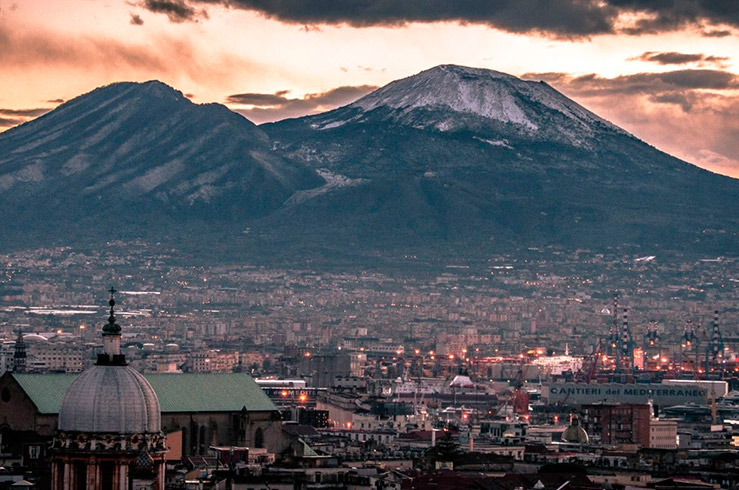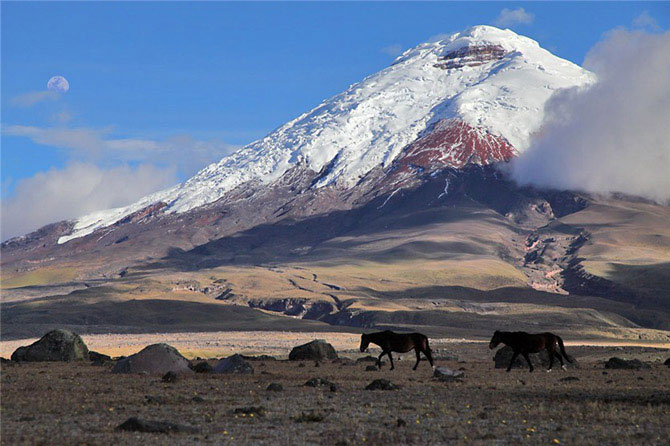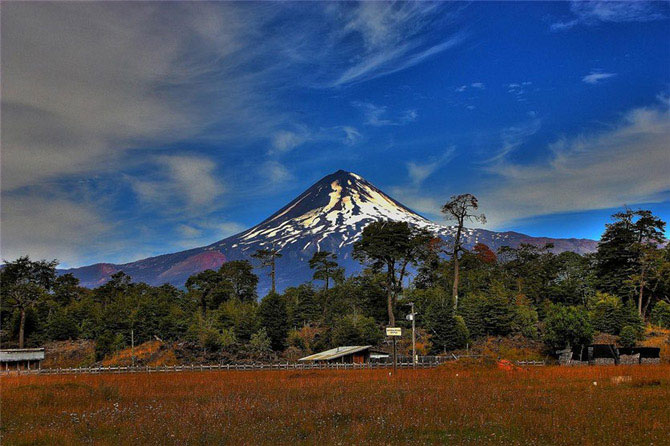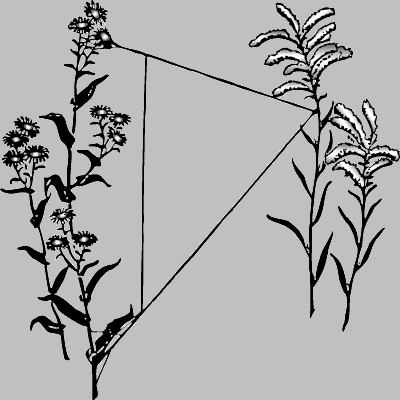Report on an active volcano. Volcanoes of the planet
Volcanic eruptions in people's minds always gave birth to catastrophic associations ...
Boiling hot lava, boundless clouds of volcanic ash, eclipsing the Sun, dying people and entire cities - the plot of many paintings, books and films. Today, volcanoes "with a bad reputation", continuing to erupt, are popular with tourists, fans of thrills. We will tell you about the five most famous active volcanoes of the Earth.
Vesuvius
On the conscience of this relatively low (1300 meters above sea level) volcano on the shore of the picturesque Bay of Naples - two destroyed ancient Roman cities, Pompeii and Herculaneum.

On the memory of the Italians, Vesuvius erupted several times, most recently in 1944. Eruptions were always accompanied by destruction and sacrifice, in 1805 the city of Naples was even destroyed. Nevertheless, the area around the volcano is densely populated - volcanic ash fertilizes the land.
Krakatoa
The only known volcano, which managed to reborn after he destroyed himself. In 1883, the most devastating in the history of mankind eruption of the volcano Krakatau, which was on the island of the same name between Java and Sumatra.

In the sea, a wave of tsunamis washed 295 Indonesian cities and villages, killing 35,000 people. Was destroyed and the island of Krakatoa, and the volcano itself. However, in 1927 the volcano broke through the oceanic stratum and declared itself a new eruption. The new volcano was named Anak-Krakatau, it is believed that it has a serious impact on the climate of the whole Earth. The last activity of the volcano Krakatoa was observed in 2014.
Fujiyama

Attitude to Fujiyama in the Japanese is peculiar, they do not experience a mortal terror, but rather vice versa. The followers of Shinto religion consider Fujiyama to be a shrine, a symbol of the immortality of the soul, and even built a temple on its top, near the post office and meteorological station. Fujiyama, along with tourists from around the world, is visited annually by thousands of Shinto pilgrims.
Hekla

Since then, there have been about three dozen significant eruptions. All are completely unlike one another and unpredictable. Some - short, several days, others can last for months. And the eruption, which began in March 1947, ended only in April 1948. Icelanders believe that the longer the "dormancy" of the volcano lasts, the more catastrophic will be the consequences of the earthquake.
Klyuchevskaya hill
Outside the Caucasus, Klyuchevskaya Sopka is the highest mountain in Russia (4800 meters). And the highest volcano on the Eurasian continent. Klyuchevskaya Sopka is the most active of 29 active volcanoes in Kamchatka, the last eruption occurred in 2013.

Despite the restless and unpredictable nature of the volcano, climbers and mountain tourists often climb the Klyuchevskaya hill. The volcano also attracts tourists with an amazing natural phenomenon - lenticular clouds. Large white clouds hang over the crater of the Klyuchevskaya hill and remain stationary even in very strong winds.
There are more than 600 active volcanoes on our planet, 28 of them in Kamchatka. Also on the peninsula there are 160 extinct volcanoes. Kamchatka volcanoes are one of the wonders of the world and one of the main natural attractions of our country. From 27 to 29 August in Kamchatka will celebrate the day of the volcano. Three volcanoes - Kliuchevskoy, Koryaksky and Kronotsky - could claim the role of a volcanic symbol of Kamchatka.
the Krenitsyn volcano on the island of Onekotan of the Great Kuril chain.
The highest volcano of the peninsula is Kluchevskoy, it rises to the sky to a height of 4,750 meters. The greatest volcano of Eurasia reached its almost five-kilometer height due to the fact that it was formed on a peculiar geological "pedestal" - the slope of an ancient volcano. The own altitude of the Klyuchevsky volcano (relative altitude) is 3000 m - this is less than in both Koryaksky (3300 m) and Kronotsky volcanoes (3,100 m).

Indonesia is called a country of thousands of islands, but it can rightly be called a country of volcanoes. Especially many volcanoes on the island of Java.
In the photo: Bromo volcano on the island of Java in Indonesia.

The volcano Cotopaxi is the second highest peak in Ecuador and the highest active volcano in the country (5,897 m). Cotopaxi is also among the highest active volcanoes of the planet.

Iscalco Volcano in El Salvador is one of the youngest volcanoes in Central America and is considered one of the most active in the world. His first recorded eruption occurred in 1770.

The most famous volcano of Mexico Popocatepetl is located 40 kilometers southeast of the country's capital. The height of Popocatepetl above sea level is 5 thousand 452 meters. For a long time it was considered extinct, but in the mid-90s Popocatepetl began to show the first signs of activity, showing formidable temper and justifying its name, which in the translation from the Aztec language Nahuatl means Smoky Mountain.

The St. Helens Volcano is located in Washington County, USA, 154 kilometers south of Seattle. St. Helens is one of the volcanoes of the "Pacific Fire Ring", which includes 160 active volcanoes. The volcano is best known for the catastrophic eruption of May 18, 1980, the most destructive in US history, in which 57 people died.

Fuji is an active volcano located on the island of Honshu, 90 km from Tokyo. Fuji - the highest mountain peak (3776 m) in Japan, the mountain looks like an almost symmetrical cone, is one of the symbols of the country and attracts a large number of tourists.

Etna - an active volcano, located on the east coast of Sicily, near the cities of Messina and Catania. Its height can not be indicated accurately, as it constantly changes as a result of eruptions. By area, Etna occupies 1,250 square kilometers. As a result of lateral eruptions, Etna has 400 craters. On average, once every three months, the volcano erupts lava.

Vesuvius is the only active volcano in continental Europe. The height of Vesuvius is 1281 meters, the crater is about 750 meters in diameter. Vesuvius is not without reason is considered one of the most dangerous and famous volcanoes in the world, because it was almost 2 thousand years ago that one of the cities of the Roman Empire, known to all as Pompeii, was destroyed.

Such natural formations as volcanoes are capable of very much. They can easily destroy cities, all living things on their way, and even influence climate change. To date, about 600 active volcanoes are known, many of which are fairly well known. And although some of them regularly erupt, while others are at rest, each of them represents a danger.
Vesuvius volcano
One of the most dangerous volcanoes on the planet, whose height is 1281 meters, and the crater diameter is 750 meters. For all of its existence, Vesuvius has been active about 80 times. The most famous eruption, during which several cities collapsed, including Pompeii, was recorded in 79 AD. But the eruption in 1944 brought the destruction of several settlements and the death of about 57 people.
The volcano of Fujiyama

This volcano, which has the shape of a cone, is on about. Honshu, not far from the city of Tokyo. Also, this natural formation is considered the highest mountain in Japan, because its height reaches 3776 meters. The last eruption was recorded in 1707.
Volcano Popocatepetl

This most active volcano rises in Mexico, and its strange name consists of several words: a pope - "one that smokes" and a teplete - "mountain."
Krakatoa volcano

Previously, this active volcano was the most common islet. In 535, there was such a strong eruption that it could lead to a global climate change. As a result, the islands of Sumatra and Java were formed, as well as the current strait. During the study of the volcano, traces of the most powerful prehistoric actions were found, the most powerful of which was supposedly in 535 AD.
The Etna Volcano

The most active of all known volcanoes. Its eruptions occur about once every 3 months. It's amazing that this volcano rising on the Sicilian coast changes its height between eruptions. Etna can be considered the highest active volcano in Italy, because it exceeds its "rival" Vesuvius by about 2.5 times.
An interesting selection of different volcanoes.
The word "volcano" originates from the name of the Roman god of fire Vulcan. In ancient times, volcanoes called the forges of this god. Eruption were a sign that the Vulcan god was forging new weapons.
To date, more than 600 volcanoes are active - most of them are concentrated in places of plates joining - in Kamchatka, Central America, Chile.
As if the volcanoes attracted the eye, it is necessary not to forget about the immediate danger emanating from them. Settlements that are located near the volcano are always ready for the fact that the eruption can be too strong, and the consequences are unpredictable.
Cotopaxi, Ecuador
Cotopaxi is a volcano located in the Andes. It is the highest active volcano in the world (5897 m) and the second highest peak in Ecuador. Cotopaxi is distinguished by the riot of greenery on its foothills and graceful craters. It is also considered one of the most dangerous of active volcanoes. There have been more than 50 eruptions since 1738. Its eruptions led to the destruction of the nearby town of Lakatunga. The volcano has been relatively inactive since 1904. This is what makes Cotopaxi the most popular among alpinists, cyclists and tourists.


Popocatepetl, Mexico

Popocatepetl (also called Popo and Don Goyo) is an active volcano in Mexico. It reaches an altitude of 5,426 m and is the second largest at the highest level in the country. Popocatepetl got its name from the word Nahuatl "popōca" (smoke) and tepētl ("mountain"), which means "Smoking of the Mountain" and fully justifies its name. Until the nineties, Popo was a favorite vacation spot - a snowboard center. In 1947, he began a new cycle of activity with a major eruption. At present, scientists carefully study it. Residents of neighboring towns are admiring the snowy white mountain of Popocatepetl for most of the year.



Etna in Sicily

Etna (which means "mountain fire" in Arabic) is the highest and most active volcano in Europe (3326 m). Fixed more than 200 of its eruptions. It is interesting that Etna varies in height from the eruption to the eruption. For example, at present it is 21.6 m lower than in 1865. Approximately every 150 years, Etna destroys one of the neighboring villages, but despite this, the nearby territories are densely populated. The fact is that volcanic ash makes the soil fertile. According to recent studies, the danger of Ethna's extensive eruption is growing. Because of the constant activity, Etna was chosen as the 'Volcano of the Decade'



Fujiyama, Japan

Fujiyama is an active volcano and the highest peak of Japan (3776 m). Its last eruption dates from 1707 and 1708. Fujiyama is distinguished by its almost perfectly symmetrical cone, clearly visible from Tokyo in clear weather, which is one of the symbols of Japan.



Llama, Chile

Llaima is the largest and most active volcano in Chile at 3125 m. The name "Llayma" from the Araucanian language (the language of the Mapuche Indians) means "bloody veins" - like streams of incandescent lava flowing down from the volcano. The main eruptions date back to 1994, 2008 and 2009. The eruptions in 2008 forced the evacuation of people from nearby settlements. The column of the ashes of the eruption came to the east and reached the Atlantic Ocean in 4 days.



Gunung Merapi, Indonesia

Gurung Merapi (ie, Mount of Fire) is an active conical volcano located on the border between Central Java and Yogyakarta province of Indonesia. Its height is 2914 m. Merapi is the most active volcano in Indonesia with regular large eruptions every 7 years, and minor every 2 years. One of the most destructive eruptions was recorded in 1673, when several cities and many villages were destroyed at the foot of the volcano. In the XIX century, 9 eruptions were recorded, in the first half of the 20th century - 13. Despite peaceful phases of inactivity, smoke from the top can be observed almost every day. He always reminds residents of the danger.



Piton de la Fournez, Mascarene in the Indian Ocean

Piton de la Fournez is a shield of an active volcano on the islands of Reunion in the Indian Ocean at 2,631 m in height. Nowadays it is known as the most active volcano in the world. Since the XVII century, more than 150 volcanic eruptions have been recorded. One of its last eruptions lasted almost six months from August 2006 to January 2007. The next eruption was observed in February 2007, September 2008, and the latest from January 1 to 12, 2010. You can get to Piton de la Fourne by an asphalt road and this makes it popular with tourists.


![]()
Redout, Alaska

It is a stratovolcano with a crater at an altitude of 2700 m. Its most active eruptions in the 20th century date back to 1902, 1966 and 1989. In the last eruption in 2009, 6 explosions were recorded that threw a column of ash more than 9 miles into the air. It was the biggest volcanic eruption in almost 20 years.



Ruapehu, New Zealand

Ruapehu is an active volcano in New Zealand, a height of 2,797 m. It is considered one of the world's most active volcano and the largest active volcano in New Zealand. Ruapehu received its name from the Maori language, on which this word means "the abyss of the explosion." The last eruption is dated September 25, 2007,. Despite the fact that the eruption began, like all the previous ones, suddenly, it is often visited by tourists.
![]()


Semeru, the island of Java

Semeru the highest mountain on the island of Java and the most active. Height Seven is 3676 m. In the crater of the volcano there is a lake of lava. Since 1818 there were about 55 eruptions (10 of which led to the death of people). Since 1967, the volcano is constantly active, it ejaculates clouds of smoke, ash and pyroclastic material with an interval of 30-50 minutes. The eruptions of the Seven occur at the present time mainly in the southern crater of the volcano.







